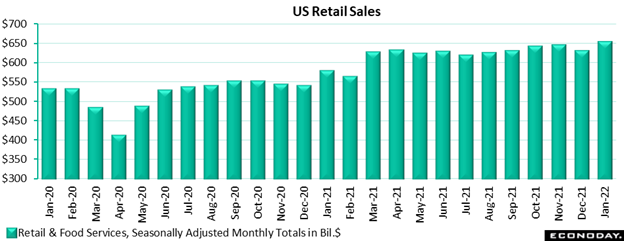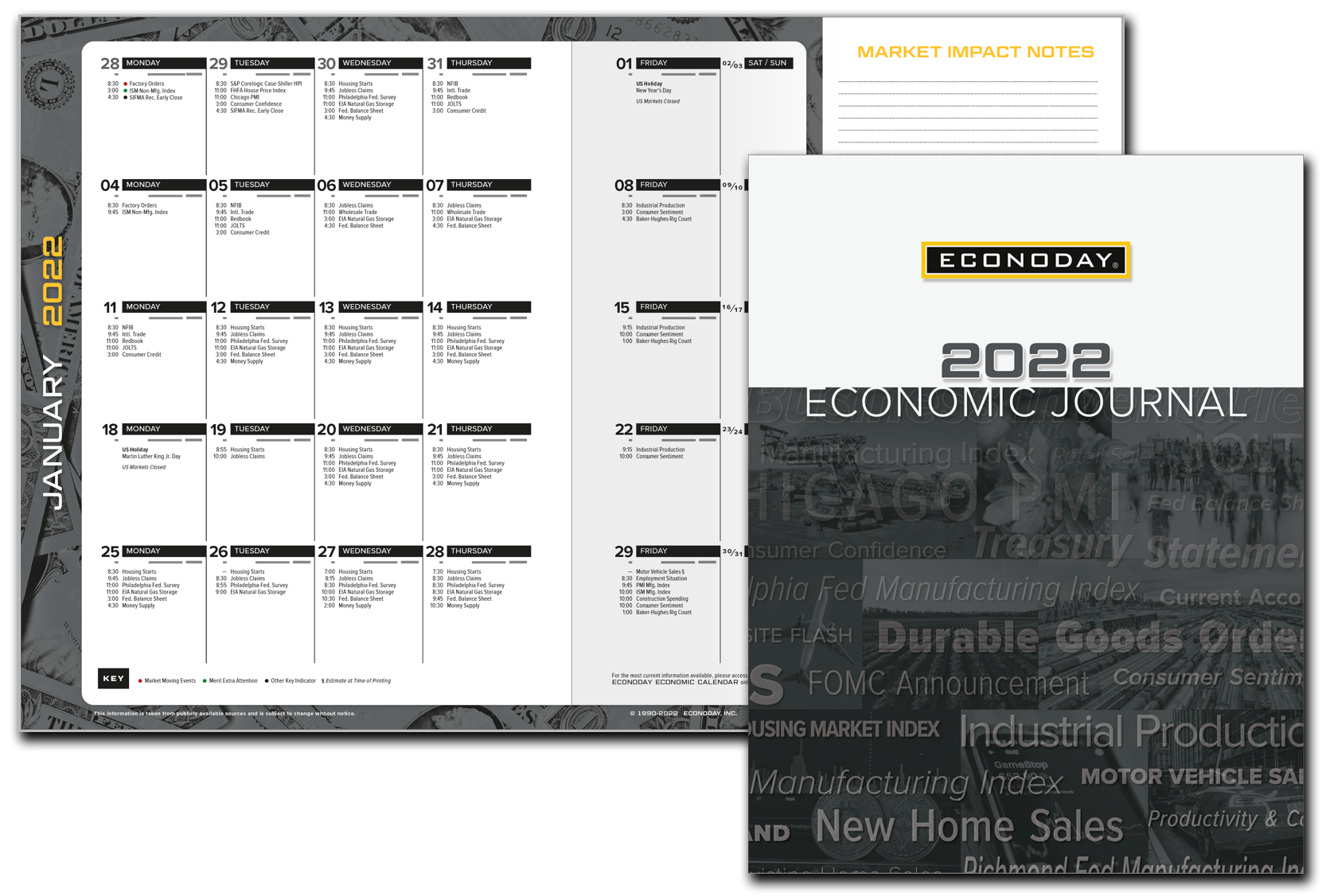Contrary winds for consumer spending in first quarter 2022
By Terry Sheehan, Econoday economist
February 22, 2022
It may be a little tough to parse out the state of consumer spending in the first quarter of 2022. It will definitely be hard to assess spending based on a single month’s data. There are a number of things to keep in mind that are going to make the month-to-month changes volatile and the year-over-year comparisons unequal.
First, inflation has kicked in. By definition it will push up the dollar value of retail sales, especially in those areas where shortages have allowed sellers to avoid post-holiday discounting. On the other hand, shortages also mean fewer goods to sell. Buyers who need things like replacement appliances and electronics, motor vehicles, or other hard goods will be forced to purchase available inventory. In many cases, this will mean buying the more expensive version of the item.
Note that inflation has been a major drag on measures of consumer confidence, but it doesn’t seem to have had a commensurate effect on consumer spending. Consumers are worn down by the long pandemic and the fresh worries about price stability and the economic outlook, but they are still spending.

Second, incomes are up as more Americans, compared to early in the pandemic, are earning income and getting better compensation. The 5.6 percent cost-of-living adjustment (COLA) for social security benefits won’t hurt either. In theory this will improve discretionary income. However, inflation will eat up some of this. There is no better example than gasoline prices. The costs of a gallon of regular gasoline was $3.32 in January 2022, up from $2.33 in January 2021. February costs for gasoline are rising. Household energy costs are nondiscretionary, as are things like food. Unlike food, this is one of the items that you can’t adjust buying to cheaper alternatives. Nonetheless, some households are now in a stronger financial position after refinancing mortgages or opting out of renting into homeownership, or switching jobs.
Third, February is when tax refunds start to arrive. The first wave of direct deposits and checks began early in February 2022 and will likely turn over promptly into spending, savings, and debt reduction. The average size of a refund so far in 2022 is $2,323 after two weeks of data. This is good for the first quarter and will help month-to-month retail sales. In historical terms this is a good-sized refund, but less so when compared to last year when refund checks didn’t start to arrive until late February. There was a rush of refunds sent out in second half of February 2021 and these were on average $3,021 at the end of the month. So compared to 2021, there is likely to be less of a boost from tax refunds.
Even bigger refunds arrived in March and April last year and helped kick consumer spending into high gear especially when combined with the final Economic Impact Payment in March/April. This helped lift spending at the end of the first quarter and the start of the second quarter 2021. The absence of stimulus checks in 2022 means that some of the cash that helped rev up auto sales last year – and deplete inventories of motor vehicles before the new model year – is missing this year. Given higher prices for new vehicles and especially for used ones, consumers are going to take a close look at affordability before buying. This is true for other big-ticket items that often are bought when households receive a chunk of change from the tax refund.
Fourth, the signs that the cost of financing purchases is going higher – both for homes and consumer goods – will motivate some buying in the first quarter to keep monthly payments down. It’s pretty clear that the Fed is going to start hiking short-term rates. Already longer rates have risen noticeably, particularly for home mortgages. Consumers are going to want to lock in lower rates while they can.
Finally, there’s the timing of the spring holidays. Last year travel for leisure activities like spring break was, due to the pandemic, at a lull though many households were flush with cash from refunds and stimulus money. This year, improved incomes, higher levels of vaccinations and fewer restrictions on travel may help holiday travel, but money may be more of an issue. Some consumers may opt to stay closer to home due to well-advertised problems with air travel and personnel shortages at hotels and restaurants.
One thing likely to distort some of the spending numbers for March is the timing of the Passover and Easter observances. The first Friday of Passover is April 15 and Easter Sunday is April 17 in 2022. In 2021, both were two weeks earlier. Spending associated with the observances will be concentrated in the April retail data for 2022, whereas most of it occurred in March last year. This means that the first quarter of 2022 won’t get that finishing nudge in spending in the last couple of weeks, although the start of the second quarter should see a nice burst of spending.
MARKET-MOVING EVENTS FOR AN ENTIRE YEAR
Strategic investing and analysis are a lot easier when you can identify patterns and see how economic events and announcements correlate with specific market movements. The Econoday Journal provides a convenient and easy way to follow important economic events every day, every month, throughout the year.
- Enhanced new large format
- Spiral-Bound
- Monthly Monitor Calendar
- Space to write personal Market Impact Notes
- PLUS Our comprehensive Resource Center, featuring all the great information & insights you’ve come to expect from Econoday

